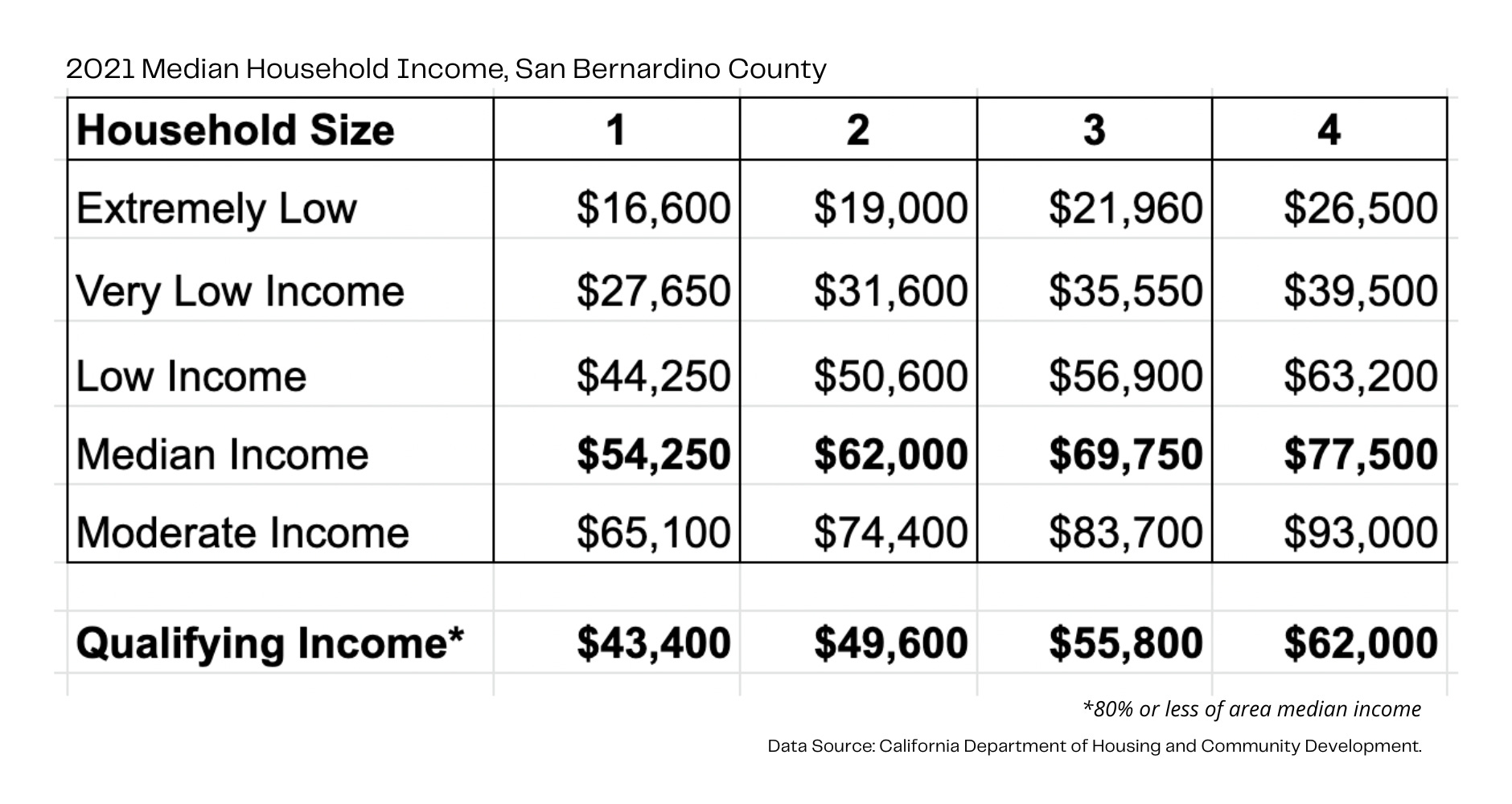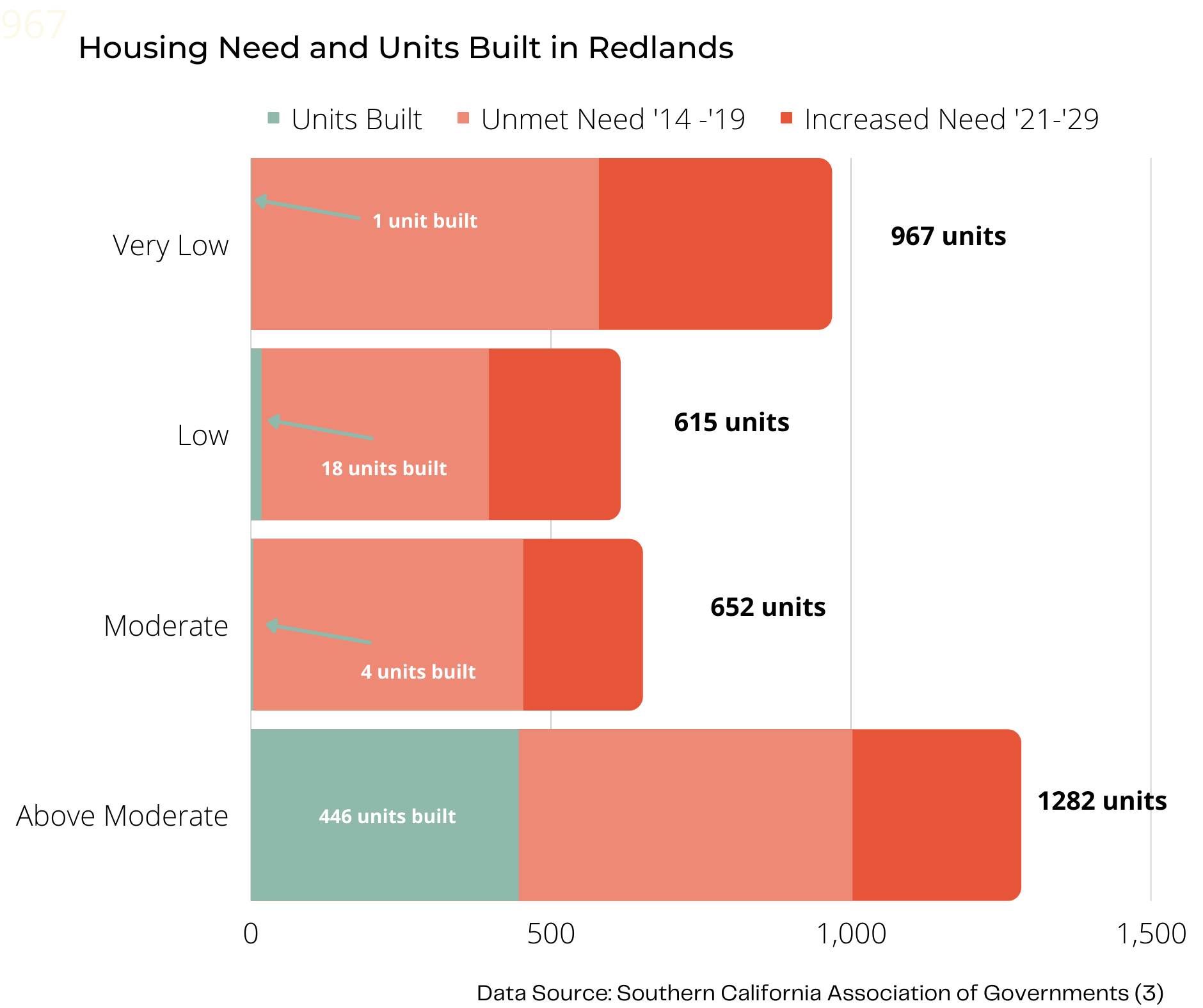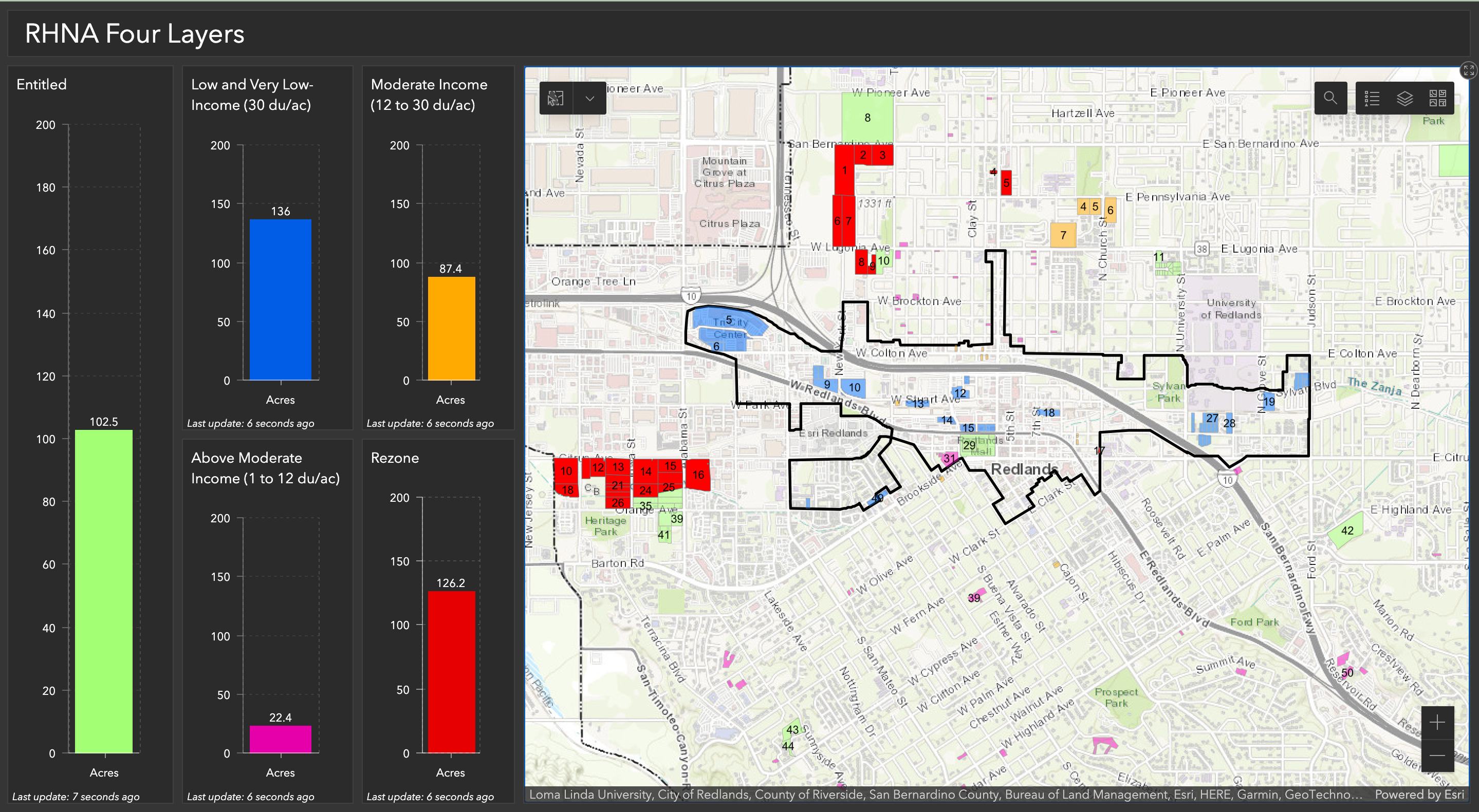October 24, 2025
Local utility upgrades, warehouse referendums, and the No Kings rally in Redlands
This week’s newsletter explores the City’s housing plan, which confirms the dire need for affordable housing. Plus how development has not kept up with demand and why that might soon change.

UPDATE Oct 4, 2022: Redlands City Council Adopts 2021-2029 Housing Element.
UPDATE July 5, 2023: Redlands City Council Adopts an Inclusionary Housing Ordinance .
This is Part 3 of 3 in a series on housing in Redlands. You can catch up on Part One and Part Two about a local renovation eviction that led to rising rent prices and contributed to the struggle to maintain affordable housing in Redlands.
Redlands, much like California, is experiencing a housing affordability crisis. The responsibility for planning and developing new housing opportunities falls within local communities. One way local governments plan is through something called a “Housing Element.” This plan includes analysis of housing need by income level and proposals that adjust zoning and identify programs to meet the demand, all of which must be approved by the State.
On Feb 1 of this year the City Council adopted the drafted Housing Element for 2021-2029. Over the last several months, city officials say the project team has incorporated comments from the California Department of Housing and Community Development (HCD). Many of the edits from HCD include a more robust approach to affordable housing. The HCD is pushing for changes in traditional zoning in most urban and suburban areas of California. This is reflected in the current Housing Element.
Last month, city hall asked residents to weigh in again and sought public comments by Aug 3rd. The proposal was then submitted to HCD for review this month.
Here’s a deeper look at how the Housing Element addresses affordable housing in Redlands.
The first step in the Housing Element is determining housing needs. Local demographics, such as household income, employment, and family type, inform what’s called the “Regional Housing Needs Assessment” (RHNA) for Redlands. The RHNA projects the number of housing units needed across various income levels.
These income levels are determined by HUD and based on the percent of area median income (AMI).
Here’s how it breaks down in San Bernardino County:

The 2021 area median income for a family of four in San Bernardino County is $77,500 a year. Households earning less than 80% of the area median income qualify for affordable housing.
This means a household of four making less than $62,000 could qualify.
Not only are affordable housing units being lost to new investments, like in the recent renovation eviction case, but housing for low-income households is not being built. Meanwhile, the need for low-income housing in Redlands is rising at a higher rate than higher income housing.
The need for housing that fits households with incomes below $63,000 (very-low and low income housing combined), is 10% greater than the need for above-moderate income housing.
Yet in the last housing cycle, during which only 19% of the projected housing need was met, the vast majority of units were built for above moderate‐income.
This graph shows the breakdown of units built, unmet need and increased need across income levels.

The Housing Element addresses how local restraints impact housing development through caps on the number of units produced each year and limits on multi-family developments.
The shortfall of affordable housing may soon be addressed because of the State of California Housing Crisis Act. The law passed in 2019 reduces local governments ability to delay, deny, or reduce the density of housing projects and supersedes any growth management restricts put in place by local governments.
This means Redland’s Measure N, which limits the number of housing units per year to 400, and Measure U, which sets the ratio of single-family to multi-family developments at 75/25, are overridden by State law until 2030.
While developers are needed to build the housing, the City’s job is to designate land for housing development based on the RHNA.
A variety of land can be designated for low-income housing, including vacant land or areas to be rezoned for multi-family residential.
The map below shows in more detail the zoning areas. Click on the map to follow the city’s interactive zoning map link.

In addition to providing adequate land for affordable housing, the City has planned policies and programs that encourage or require affordable and fair housing.
This list is not exhaustive but gives you an idea of what can be done to improve outcomes for building affordable housing.
Once the Housing Element is adopted, it will require the City to work alongside developers to ensure the housing actually gets built.
To explore more about the Housing Element and the pages referenced above update you can follow this link provided at the City’s website: https://www.cityofredlands.org/post/housing-element
Sign up for our weekly newsletter